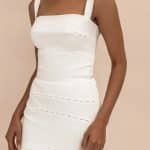Sunlight. It illuminates our homes, warms our rooms, and brightens our mood. But this radiant natural light has a dark side – ultraviolet (UV) rays. UV rays, while invisible to the naked eye, can cause significant damage to your home’s interior over time. It can fade your furniture, harm your precious artworks, and even deteriorate your flooring. As a homeowner, you may be wondering, how can you prevent interior damage from UV rays? In this informational guide, we explore the multifaceted strategies you can implement to protect your home from UV damage.
Understanding UV Rays and Their Effects
Before we explore how to protect your home’s interior from UV damage, it’s important to understand what UV rays are and how they can affect your household items.
A lire également : Can Upgraded Shocks and Struts Improve Your Car’s Handling?
UV rays are a type of electromagnetic radiation emitted by the sun. They are divided into three categories: UVA, UVB, and UVC. Of these, UVA rays are the most harmful, as they can penetrate glass and cause significant damage to materials and fabrics.
UV rays can cause furniture, rugs, and artwork to fade over time, a process known as photodegradation. They can also cause materials like plastics and woods to become brittle or crack. The harm isn’t limited to visual appeal; UV rays can also degrade the structural integrity of your home’s interior items.
A lire également : How to Choose the Right Performance Chip for Your Car?
Utilizing Window Treatments
One of the most straightforward ways to protect your home from UV rays is through the use of window treatments. Such treatments encompass a variety of options from curtains and blinds to shades and shutters.
Curtains and blinds made from UV-blocking materials provide a physical barrier that prevents most harmful rays from entering your home. Meanwhile, shades and shutters can reduce the amount of sunlight coming in, thereby reducing the potential for UV damage. Some treatments, like solar shades, are specifically designed to block UV rays while still allowing you to enjoy natural light.
Applying Window Films
If you’d prefer not to obstruct your view with window treatments, another effective strategy is to apply window films. These are thin, transparent layers that adhere to your window glass and block a significant portion of incoming UV rays.
Many window films are designed to block over 99% of UV rays, offering an impressive level of protection. Plus, they don’t dramatically alter the appearance of your windows, allowing you to maintain your home’s aesthetics. Window films aren’t just efficient; they’re also a cost-effective solution for preventing UV damage.
Installing UV-Blocking Glass
For those seeking a more permanent solution, UV-blocking glass offers the ultimate protection against harmful sunlight. This specialized glass features a low-emission (Low-E) coating that reflects UV rays, drastically reducing their ability to penetrate your home.
Although this option might be more costly and involve more work to install, it is a definitive solution that provides peace of mind. You can rest assured that your interiors are protected against UV rays, without having to worry about maintaining window treatments or films.
Regularly Rotating Your Furnishings
While the above methods are effective at reducing the amount of UV rays entering your home, some exposure might be inevitable, especially in rooms with large windows or skylights. In such cases, you can minimize the effects of UV rays by periodically rotating your furnishings.
By moving your furniture, rugs, and art pieces around every few months, you can ensure that they don’t constantly get exposed to sunlight from the same angle or intensity. This can help slow down the fading process and prolong the life of your interior items.
Protecting your home’s interior from UV rays requires a multi-pronged approach. Whether you opt for stylish window treatments, practical window films, permanent UV-blocking glass, or simply rearranging your furniture, each strategy plays a part in preserving the beauty and longevity of your home. Remember, prevention is always better than cure. Start safeguarding your home against UV damage today.
Incorporating UV-Resistant Materials
Another strategy to protect your home from UV rays is to incorporate UV-resistant materials in your home decor. These materials are specifically designed to resist fading and damage caused by UV rays.
For instance, certain types of fabrics, like those made from synthetic fibers, are more resistant to UV rays than others. Furniture crafted from tropical hardwoods, like teak or eucalyptus, can better resist UV damage compared to other types of wood. Similarly, certain paints and coatings contain UV inhibitors that help protect the underlying material from sun damage.
When shopping for furniture, rugs, or artwork, it’s worth inquiring about the UV-resistance of the materials used. Don’t hesitate to ask the retailer about the UV-resistance rating of any item you’re considering. While UV-resistant materials might be more expensive initially, they can save you money in the long run by reducing the need for replacements due to UV damage.
Adopting a Regular Maintenance Routine
The last and equally crucial strategy in preventing UV damage to your home’s interior is adopting a regular maintenance routine. Like any other aspect of home maintenance, preventing UV damage requires consistent effort.
This routine should include regular dusting and cleaning of your window treatments, removing any built-up dust or grime that could reduce their UV-blocking effectiveness. Be sure to inspect and clean your window films as well. Over time, films can develop scratches or tears that might reduce their ability to block UV rays.
For items like furniture and rugs, consider using UV-protective sprays. These can provide an added layer of protection, especially for items that receive a lot of sunlight. Remember to reapply the spray according to the manufacturer’s instructions to maintain its effectiveness.
Conclusion
UV rays can cause significant damage to your home’s interior, leading to faded furniture, deteriorated artwork, and brittle materials. However, with strategic planning and consistent effort, you can protect your home from these harmful rays.
By understanding the effects of UV rays and implementing a combination of preventive measures like window treatments, window films, UV-blocking glass, UV-resistant materials, and regular maintenance, you can minimize UV damage. Remember, each measure plays a crucial role in safeguarding your home.
The process may require an initial investment and ongoing effort, but the peace of mind and prolonged lifespan of your interior items are well worth it. With these strategies in place, you can continue to enjoy the benefits of natural sunlight without worrying about the potential damage from UV rays.











